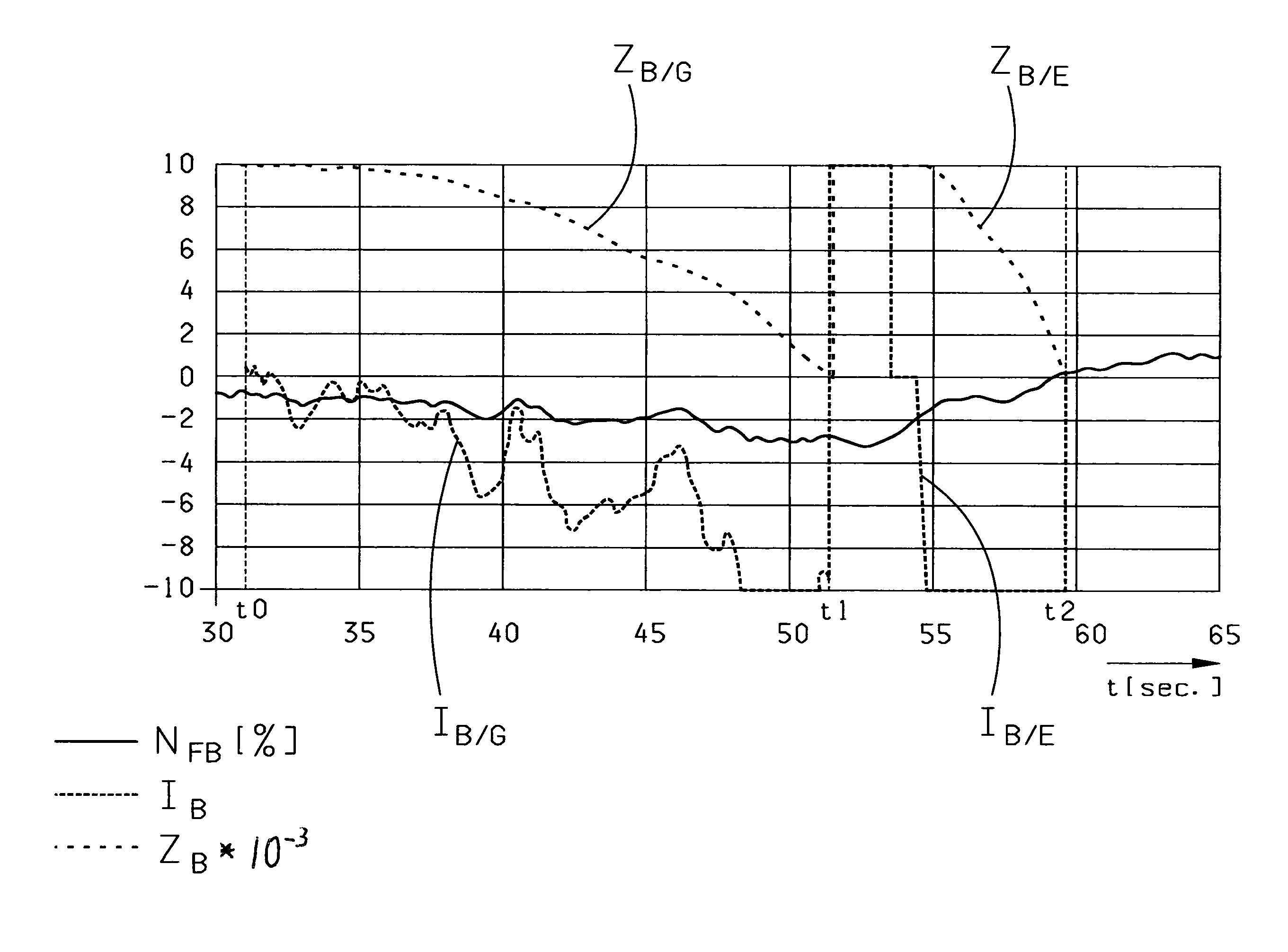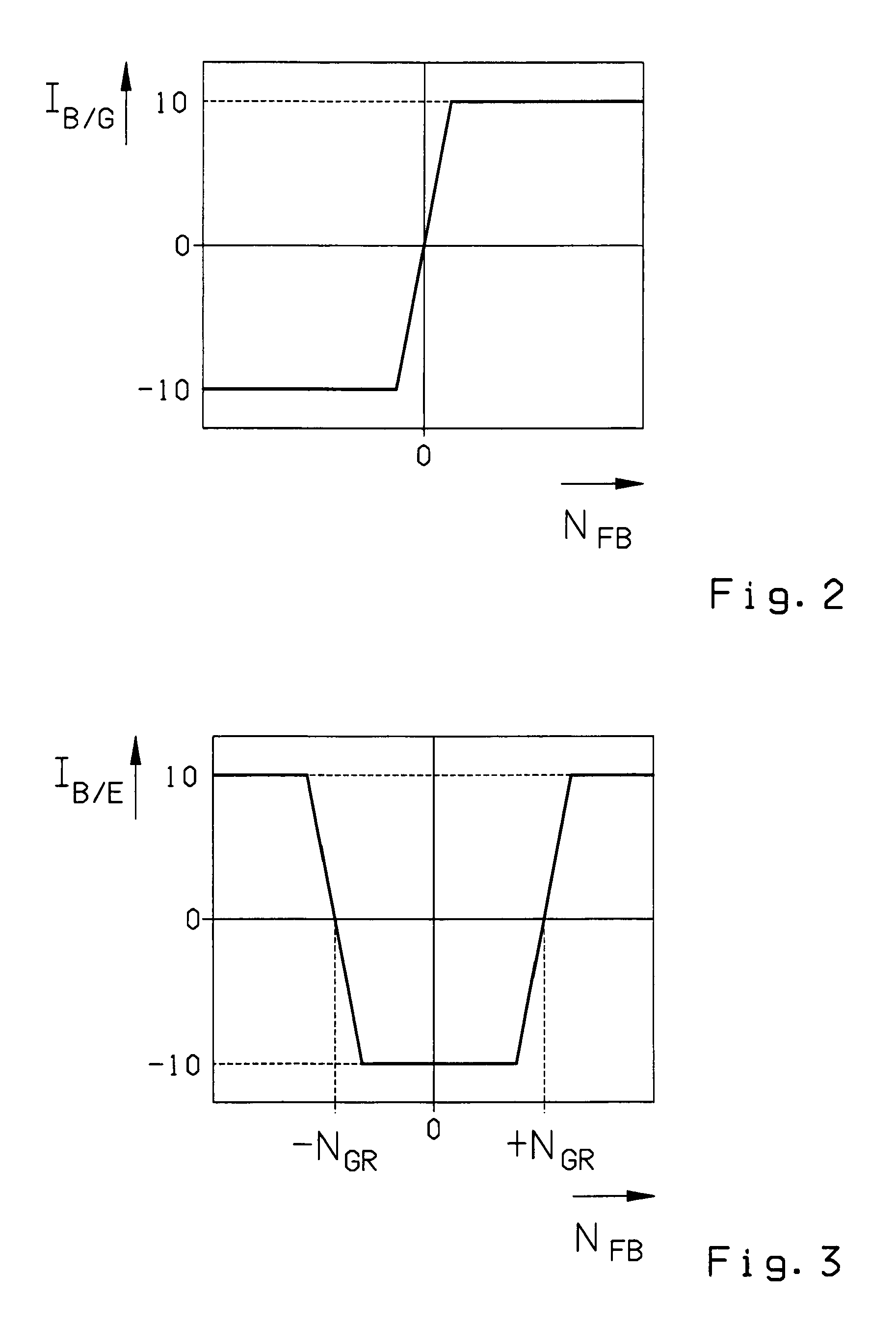Method for controlling an automatic multi-step shift transmission
- Summary
- Abstract
- Description
- Claims
- Application Information
AI Technical Summary
Benefits of technology
Problems solved by technology
Method used
Image
Examples
Embodiment Construction
[0051]FIG. 1 shows the time variations determined during the driving operation of a motor vehicle, of a road inclination NFB preferably calculated from the current drag torque MMDBr of a permanent brake, the current driving speed vF and the current driving acceleration aF using the movement equation, that of an observation counter ZB, and that of a counter increment IB. The observation counter ZB and the counter increment IB are in each case part of a first part-function and a second part-function of a recognition function for detecting a downhill run-out.
[0052]The first part-function serves to detect a downhill gradient (NFB0 at which, for example, the starting conditions, namely a current downhill road gradient (NFBMB / G begins with a positive initial value ZB / G—0=103 and is varied additively in steps, in the present case of 0.1 seconds, by the counter increment IB / G which is determined as a function of the road inclination NFB and can adopt values between −10 and +10.
[0053]The fun...
PUM
 Login to View More
Login to View More Abstract
Description
Claims
Application Information
 Login to View More
Login to View More - R&D
- Intellectual Property
- Life Sciences
- Materials
- Tech Scout
- Unparalleled Data Quality
- Higher Quality Content
- 60% Fewer Hallucinations
Browse by: Latest US Patents, China's latest patents, Technical Efficacy Thesaurus, Application Domain, Technology Topic, Popular Technical Reports.
© 2025 PatSnap. All rights reserved.Legal|Privacy policy|Modern Slavery Act Transparency Statement|Sitemap|About US| Contact US: help@patsnap.com



